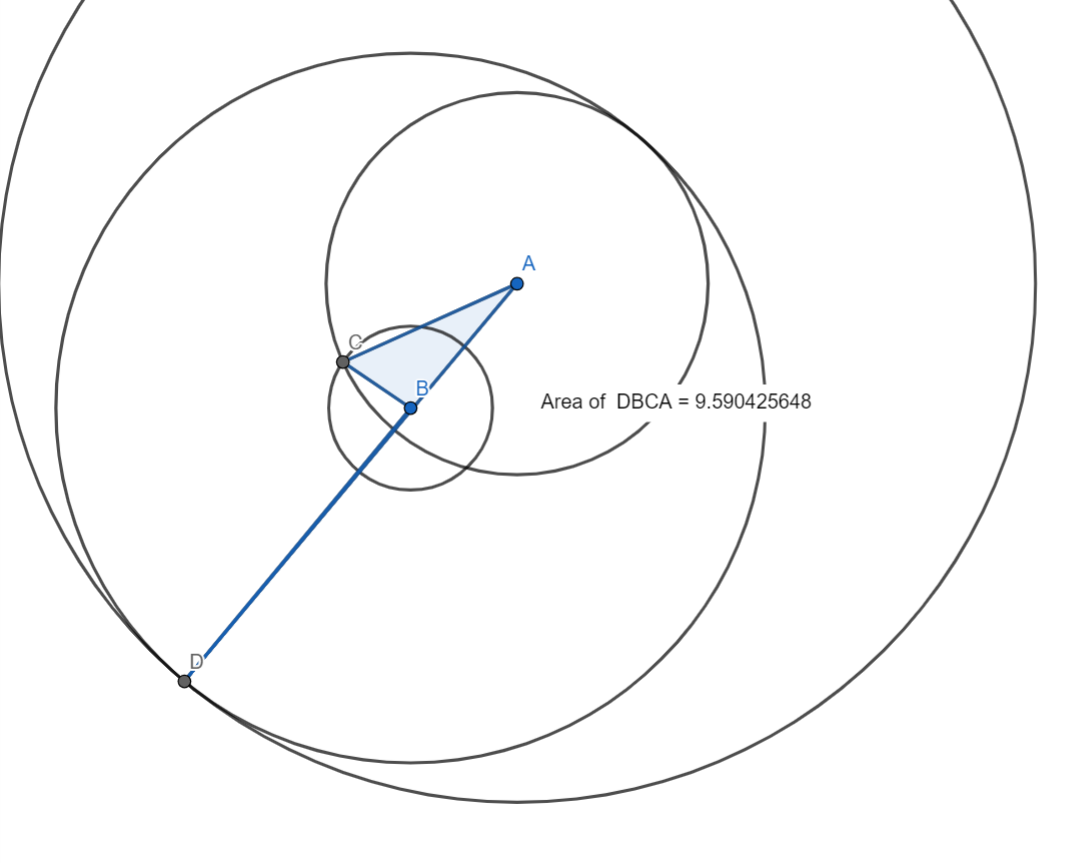The basic fact is that one can express the required extreme values of the areas in the generic case (our use of this term is explained below). The simple formulae involved can be found below. To do this we introduce a series of functions of four positive variables, the side lengths. These are
$$f_1=-(a^4+b^4+c^4+d^4)+2(a^2b^2+2a^2c^2+2a^2d^2+2b^2c^2+2b^2d^2+2c^2d^2)+8abcd.$$
$f_2$ is the same, with a minus at the $abcd$ term.
$$f_3=4a^4-(a^4+b^4+c^4+d^4-2(a^2b^2+a^2c^2+a^2d^2+b^2c^2+b^2d^2+c^2d^2)).$$
We then have $f_4=a^2+b^2-c^2-d^2$ , $f_5=a^2-b^2-c^2+d^2$, $f_6=ab+cd$, $f_7=bc+ad$, $f_8=ab-cd$, $f_9=ad-bc$.
There are constraints on the variables which are necessary to ensure that suitable quadrilaterals with these side lengths exist. The formulation in the original question seems to be not quite complete—it is not clear whether the situation allows the solution to be non convex (which, in the cyclic case, means self-crossing). We are assuming that this is the case. Then the positivity of $f_2$ and hence of $f_1$ ensure the existence. In the generic case, there are two quadrilaterals where the sup and inf are obtained and these are cyclic. An explicit description in terms of the above functions can be found below (General remark: I am writing this on a pad, so trying to reduce the use of mathematical symbols).
The decisive fact is that for any value $F$ which satisfies conditions to be described below there are precisely two quadrilaterals $ABCD$ which have area $F$ and side lengths $a,b,c,d$. To be precise, I am using directed areas (i.e. $A\wedge B+B\wedge C+C\wedge D+D\wedge A$) and so the area can be negative or zero in non-trivial ways (example —the quadrilateral with vertices $(0,0),(1,0),(0,1),(1,1)$). The side lengths are $|AB|=a$ and so on cyclically. The required max and min are the largest and smallest values for $|F|$ which satisfy the given condition.
The condition which $F$ must fulfill is the positivity of an explicit sextic polynomial with coefficients functions of the side lengths. Hence the required optimal values are roots of this polynomials. The polynomial is, in fact, a cubic in $F^2$ and so can be solved by radicals.
The computations are rather intricate (I used Mathematica).
The quadrilateral which attains the sup can be realised as the one with vertices
$(0,0)$, $(a,0)$, $(\frac{f_3 }{4a f_4},\frac{b \sqrt {f_1}}{f_6}) $ and $ (\frac{f_5}{2 f_7},\frac{d\sqrt{f_1}}{f_3})$.
The minimum is analogous with changes in the subscripts (which I can add if requested).
As mentioned above, this is for the generic case, by which I mean where the denominators do not vanish. The remaining cases are treated by other computations which I shall not describe here. To see what can happen in the non generic case consider the simplest one with all side lengths equal (to $1$). The maximum is clearly a square but the minimum is achieved with $A=(0,0)$, $B=D=(1,0)$ but $C$ any point on the unit circle centred at $(1,0)$.
Caveat. Of the three related topics—triangles, tetrahedra and quadrilaterals—from elementary geometry, the latter displays some subtleties not present in the other two. This is due to non-rigidity. For example, one can lose uniqueness. This is often in a relatively weak sense—instead of one solution, there are two (typically one convex, the other non-convex—example, Brahmagupta). This has been taken care of here. The second potential problem, which is relevant here, is that there are singular cases which have to be dealt with separately This can arise when terms in the denominator vanish. One important class—kites (in particular, rhomba) and parallelograms— can be subsumed under the pythagorean quadrilaterals (the sums of the squares of the lengths of two opposite pairs of adjacent sides coincide). I have also computed this case but will spare the reader the details.
Explanatory remarks about the relation to Brahmagupta’s formula for the area of a cyclic quadrilateral: There are, in fact, two such formulae, one for the convex case, one for the non-convex one (this distinction is sometimes not explicitly formulated in the literature). They correspond exactly to the above two expressions for the sup and inf. Since the validity of either of these expressions is equivalent to the quadrilateral being cyclic, this shows that (despite comments here) both the sup and inf are attained and, indeed, at cyclic quadrilaterals.
The following is off topic but I would like to add it since I feel that it makes what is going on here more transparent. One can prove the Brahmagupta formulae with a few calculations (which can be done by hand—I checked them with Mathematica to be sure). The idea is very simple— wlog one can assume that $A_1=(\cos (\theta_1),\sin(\theta_1))$, etc., and then compute the corresponding side lengths and the (square of) the area. Showing that the corresponding differences vanish then reduces to the kind of manipulation of trigonometric identities that we all learned in high school. The difference between the convex and non-convex cases arises through the occurrence of square roots of expressions of the form $1-\cos(\theta_2-\theta_1)$ and so on. This is a sine expression, with choice of sign depending on the orientation of $A_1$ and $A_2$ as one traverses the circle. In the convex case one can assume that this is always $+$, otherwise that there is one $-$. This explains the dichotomy between the convex and the non-convex case.




